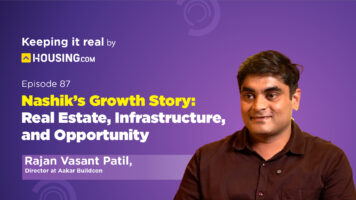The government’s National Smart Cities Mission is an urban redevelopment and retrofitting initiative to develop citizen-friendly and sustainable smart cities throughout the nation.
To kick off the Smart Cities Mission, Prime Minister Narendra Modi made the official announcement on June 25th, 2015. The goal of the initiative is to improve India’s economy and, therefore, the country’s citizens’ level of life. Cities are home to around 31% of the overall population, according to statistics collected during the 2011 Census.
By 2030, it’s expected that 40% of India’s population will reside in urban areas, where they’ll generate 75% of the country’s gross domestic product. The Standard of life in 100 Indian municipalities is the target of a new government programme.
Let’s take a comprehensive look at the Smart City Mission in India, dissecting its goals, features, city list, and any other relevant information.
Smart Cities in India: At a glance
Specifics |
Figures |
| Cities | 100 |
| Projects | 5151 |
| Amount | Rs 2,05,018 crore |
| Tendered | 6809 Projects / Rs189,737 crore |
| Work Order Issued | 6222 Projects / Rs 164,888 crore |
| Work Completed | 3480 Projects / Rs 59,077 crore |
Smart Cities in India: Mission
A “smart city” is an urban centre that is technically advanced in terms of its physical infrastructure, environmentally friendly buildings, effective means of communication, and thriving economy. In this city, IT serves as the backbone of the community, supporting the delivery of basic necessities to all of its citizens. There are a wide variety of technical infrastructures at play, including automated sensor networks and data centres.
The Indian government has established a goal to promote technology that yields intelligent outcomes and enhances the quality of life in local communities. Roughly 100 urban centres were chosen for the smart city initiative. These cities and towns were helped in their efforts to develop a distinct character and foster their cultural traditions.
The following are examples of some of the most important components of urban development in a smart city:
- Sustainable environment
- Health and Education
- Proper water and electric supply
- Sanitation and waste disposal
- Health and Education
- e-Governance and citizen participation
- Facilities for affordable housing for the poor
- IT networking and digitisation
- Urban mobility and public transportation
Smart Cities in India: Features
- Optimising the effectiveness of land use via the creation of “unplanned” zones where different types of land use and activities coexist. States will have a lot of freedom in how they regulate land use and building to account for upcoming shifts.
- Making communities more walkable to cut down on car use, pollution, and resource use. A stronger local economy, more opportunities for social interaction, and a more secure community are all direct results of this. The needs of pedestrians, cyclists, and other public transit users, as well as the associated infrastructure and administrative buildings, are taken into account throughout the development of the road network.
- Transit Oriented Development (TOD), public transportation, and last-mile par transit link are only a few of the modes of transportation that will benefit from this advocacy.
- Improvements to infrastructure and services via the implementation of “Smart Solutions” in the context of area-based development. This might include things like less expensive services, reduced energy consumption, and decreased likelihood of natural disasters.
- To enhance the quality of life in urban regions, mitigate the effects of the urban heat island effect, and create a more ecologically stable world, it is important to maintain and expand green spaces such as gardens, playgrounds, and recreational areas.
Smart Cities in India: Financing
The Smart City Mission is managed as a Centrally Sponsored Scheme (CSS), and the Central Government provides financial support to the Mission in the amount of Rs. 48,000 crore over 5 years, which is equivalent to an average of Rs. 100 crores per city per year. Because the State or ULB would be required to provide an equivalent amount on a matching basis, there will be about one lakh crore rupees worth of funding available for the creation of smart cities.
Know about: Bareilly, UP
List of Smart Cities in India
It was requested of the state governments to submit new cities based on competitions held at the state level, with the total number of cities in India being capped at 100.
The following is a list of smart cities in India:
| Dehradun
|
Rampur | Agra |
| Ghaziabad | Varanasi | Lucknow |
| Prayagraj | Kanpur | Jhansi |
| Bareilly | Saharanpur | Aligarh |
| Moradabad | Agartala
|
Karimnagar |
| Greater Warangal | Greater Hyderabad | Chennai
|
| Thoothukudi
|
Erode | Madurai |
| Coimbatore | Vellore | Salem |
| Tiruppur | Thanjavur | Dindigul |
| Tirunelveli | Tiruchirapalli
|
Gangtok |
| Namchi | Ajmer | Kota |
| Udaipur | Jaipur | Amritsar |
| Jalandhar | Ludhiana | Oulgaret |
| Raurkela | Bhubaneshwar | Kohima |
| Aizawl | Shillong | Imphal |
| Pimpri chinchwad | Pune | Aurangabad |
| Kalyan-Dombivali | Nagpur | Solapur |
| Amravati | Greater Mumbai | Thane |
| Nashik | Satna Ujjain | Sagar |
| Gwalior | Jabalpur | Indore |
| Bhopal | Kavaratti | Trivandrum
|
| Kochi
|
Bengaluru
|
Davangere
|
| Tumakuru
|
Hubballi Dharwad
|
Shivamogga
|
| Belagavi | Mangaluru
|
Ranchi
|
| Jammu
|
Srinagar
|
Shimla
|
| Dharamshala
|
Faridabad | Karnal |
| Dahod
|
Rajkot
|
Vadodara |
| Surat
|
Ahmedabad
|
Gandhinagar |
| Panaji
|
New Delhi Municipal Council
|
Silvassa
|
| Diu Dadra & Nagar Haveli
|
Naya Raipur | Bilaspur
|
| Raipur
|
Chandigarh
|
Patna
|
| Biharsharif
|
Bhagalpur
|
Muzaffarpur
|
| Guwahati
|
Pasighat
|
Amaravati
|
| Kakinada
|
Tirupati
|
Visakhapatnam
|
| Port Blair |
Smart Cities in India: Challenge
The challenge was used as the basis for choosing cities to receive funding under the Ministry of Urban Development (MoUD) programme, which used an area-based development plan as the foundation for its decision-making. At the state level, cities competed against one another with other cities located inside the same state. After that, the winner at the state level participated in the Smart City Challenge at the national level. Cities that had scored the greatest points overall in a specific round were selected to take part in the mission.
Smart Cities in India: Cities linked with government-initiated schemes
To ensure the mission’s success, it is connected to many other government-initiated programmes. Overall progress can be realised via the coordination of the state’s physical, institutional, social, and economic frameworks. These government-initiated programmes are:
- AMRUT – Atal Mission for Urban Transformation.
- HRIDAY – Heritage City Development & Augmentation Yojana
- Make in India
- Indian Internet
- Clean India Initiative
- Awas Yojana Pradhan Mantri
Smart Cities in India: Recommendations
Several recommendations can help the mission achieve greater success:
- The programme must be designed for the long haul, rather than just the next 5 years, since most cities won’t be able to function at peak efficiency in that time.
- To meet the needs of the metropolis, more projects need to be uncovered. There is still a need to fix the drainage systems in many progressive cities.
- Cities like Amaravati, Bhagalpur, Muzaffarpur, and Shillong should be studied to see why they haven’t completed a single project.
- Funding has to be mobilised, and that means raising tax revenue. The process of transferring funds should also be made public.
- All of these urban centres need to be protected by cyber security, which can encrypt data and prevent unauthorised access.
Smart Cities in India: The data-smart city mission
The Smart Cities Mission aims to improve economic growth and living standards by promoting local area development and harnessing technology, especially that which generates smart results.
The Smart Cities Mission of the Ministry of Housing and Urban Affairs is adopting a “Data Smart Cities” strategy to harness the power of data in resolving complex urban problems. The creation of a culture of data-driven governance in smart cities would be the primary focus of the Data Smart Cities initiative.
The goal of the Data Smart cities initiative is to assist municipalities in establishing the foundations of a data culture by promoting the formation of smart city alliances, networks, municipal data strategies, etc. In addition to showcasing reusable use examples for smart cities in several fields, it hopes to facilitate peer-to-peer learning on data-driven governance across cities.
The sources and amount of data acquired in cities are constantly growing as a result of the widespread use of IoT (internet of things) devices, sensors, and other tools and ways to “sense” the city. “Data Smart Cities” refers to urban areas that have made data utilisation and awareness standard practice across government and business activities. It is hoped that through fostering public participation, co-creation, and innovative problem-solving, “Data Smart” local governments would become more efficient, responsible, and transparent in their decision-making.
FAQs
A smart city makes use of information and communication technology (ICT) to increase operational efficiency, disseminate information to the public, and enhance the quality of government services and citizen welfare.
Which 4 pillars define a smart city?
Social Infrastructure, Physical Infrastructure, Institutional Infrastructure (including Governance), and Economic Infrastructure are envisioned as the four pillars of a smart city. The citizen is the focal point of each of these pillars.
Which is the best smart city in India?
The Ministry of Housing and Urban Affairs has ranked Bhopal, India, as the best smart city for the year 2022. It's the largest city in Madhya Pradesh and has a population of over 2.5 million.
| Got any questions or point of view on our article? We would love to hear from you. Write to our Editor-in-Chief Jhumur Ghosh at jhumur.ghosh1@housing.com |






